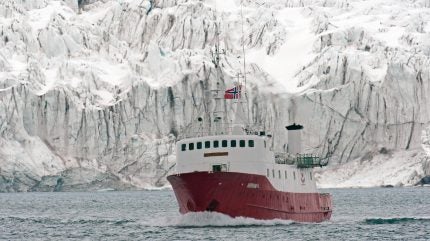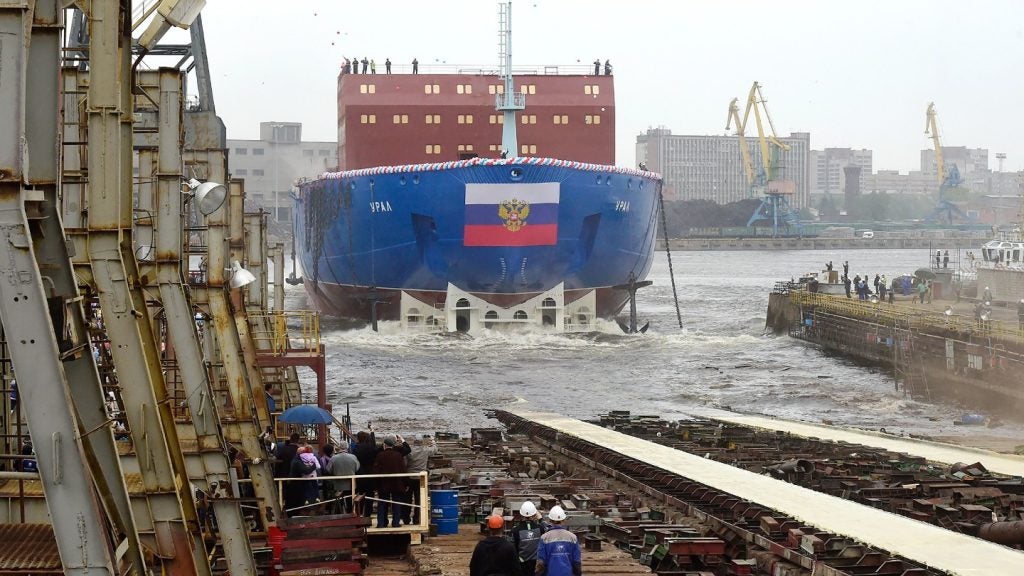
The IMO’s ban on heavy fuel oil (HFO) in Arctic waters, which came into force on 1 July, has been met with scorn by shipping industry professionals.
HFO, which is cheap and widely used by tankers cheap, is intensely damaging for Arctic climates, where the black carbon it emits when burned speeds up the rate of melting ice.
Spills of thick, tar-like HFO also have a devastating impact on the Arctic’s endangered species, including polar bears, beluga whales and walrus.
The IMO’s prohibition on the ‘use and carriage for use’ of HFO by ships in Arctic waters “feels very much like an open goal that has been missed”, according to Daniel Gent, Energy and Sustainability Manager at UECC, ro-ro carriers headquartered in Oslo.
“The existence of the waivers and exemptions in the text mean that much of the effectiveness of the ban has been eroded”, Gent tells Ship Technology. “With more than 80% of the HFO consumed in the Arctic open to waivers and exemptions, the percentage reduction in Black Carbon emissions will be in the single digits.”
Littered with loopholes
The IMO’s regulation will allow five nations on the Arctic coastline to issue waivers.

US Tariffs are shifting - will you react or anticipate?
Don’t let policy changes catch you off guard. Stay proactive with real-time data and expert analysis.
By GlobalDataDenmark (Greenland), the US (Alaska) and Finland have not specified their stance on the HFO prohibition, while Canada’s transport ministry has said it will issue waivers for domestically-flagged vessels carrying HFO until 1 July 2026, if they are involved in providing food and fuel supplies to Arctic communities, Reuters reported.
Norway has already banned HFO through the Svalbard Environmental Protection Act. In June, the Governor of Svalbard fined an Irish shipping firm 1 million NOK ($93,600) for its cargo ship sailing through Norway’s Arctic waters with HFO on board.
The company in question is Arklow Shipping, a spokesperson for Svalbard Governor’s Office tells Sip Technology, which has “not yet accepted the fine”. The main hearing in the case is scheduled for early October.
While an example of at least some consequences for HFO-carrying vessels, the Svalbard instance is expected to remain the exception, not the rule.
The IMO’s new prohibition “will allow a significant number of ships to continue burning HFO until 1 July 2029 through two separate mechanisms”, says Sian Prior, consultant at the Clean Arctic Alliance.
Prior points to Regulation 43A of MARPOL Annex I, which includes the waiver “for ships flying the flag of that nation while operating in waters subject to the sovereignty or jurisdiction of that nation”, hypothetically enabling shipowners to re-flag their ships to a friendly Arctic country.
For example, a Chinese-flagged vessel transiting Russia’s Northern Sea Route from Shanghai to Rotterdam could simply reflag to Russia and be allowed to use HFO in Moscow’s Exclusive Economic Zone in the Arctic.

The waivers aside, the IMO’s ban also includes “an exemption for ships that comply with specific fuel tank design requirements”, Prior says. These require the fuel tank be separated from the outer shell of the ship by a particular distance.
A 2019 study by the International Council on Clean Transportation found that 22% of the Arctic fleet would be exempt from the HFO ban due to fuel tank designs, and a further 53% would be eligible for a waiver.
“Together, nearly three-quarters (74%) of the HFO-fuelled fleet in 2019 would be able to continue to use HFO until 1 July 2029”, Prior tells Ship Technology. “The study ultimately demonstrated that only 30% of the HFO being carried in Arctic waters and 16% of the HFO being used in Arctic waters would be prohibited in 2024.”
Russia rubs its Arctic hands
This provision may be particularly beneficial for Russia.
While Iceland is not able to issue waivers because of the IMO’s definition of Arctic waters, Russia’s jurisdiction remains unclear.
Russian-flagged ships use drastically more HFO in the Arctic than vessels from any other nation, none more than its ‘shadow fleet’ of tankers carrying sanctioned Russian oil through the Baltic Sea and Danish Straits.
Alongside China’s Hainan Yangpu New Shipping Line, Russian state nuclear agency Rosatom is looking to operate a year-round Arctic route traversing Russia’s northern coastline from the Bering Strait to the Kara Strait.
Arctic ship traffic is already on the rise.
Recent Arctic Council studies of ship activity in the Arctic show an increase of 37% between 2013 and 2023 and a 111% increase in total distance travelled over the same decade.
This is partly due to global warming-induced ice melt in the Arctic – a region where climate change is occurring four times faster than any other – dichotomously fuelled by the shipping industry’s vast carbon emissions, which amount to 3% of the global total.
“We are talking about one of the most ecologically sensitive places on the planet where it is still acceptable to burn heavy fuel oil, emitting sulphur and black carbon in quantities that are restricted elsewhere”, Gent concludes.
With the industry itself calling for a stricter IMO prohibition on HFO use in the Arctic, attention remains fixed on any subsequent action the UN shipping body will take.



